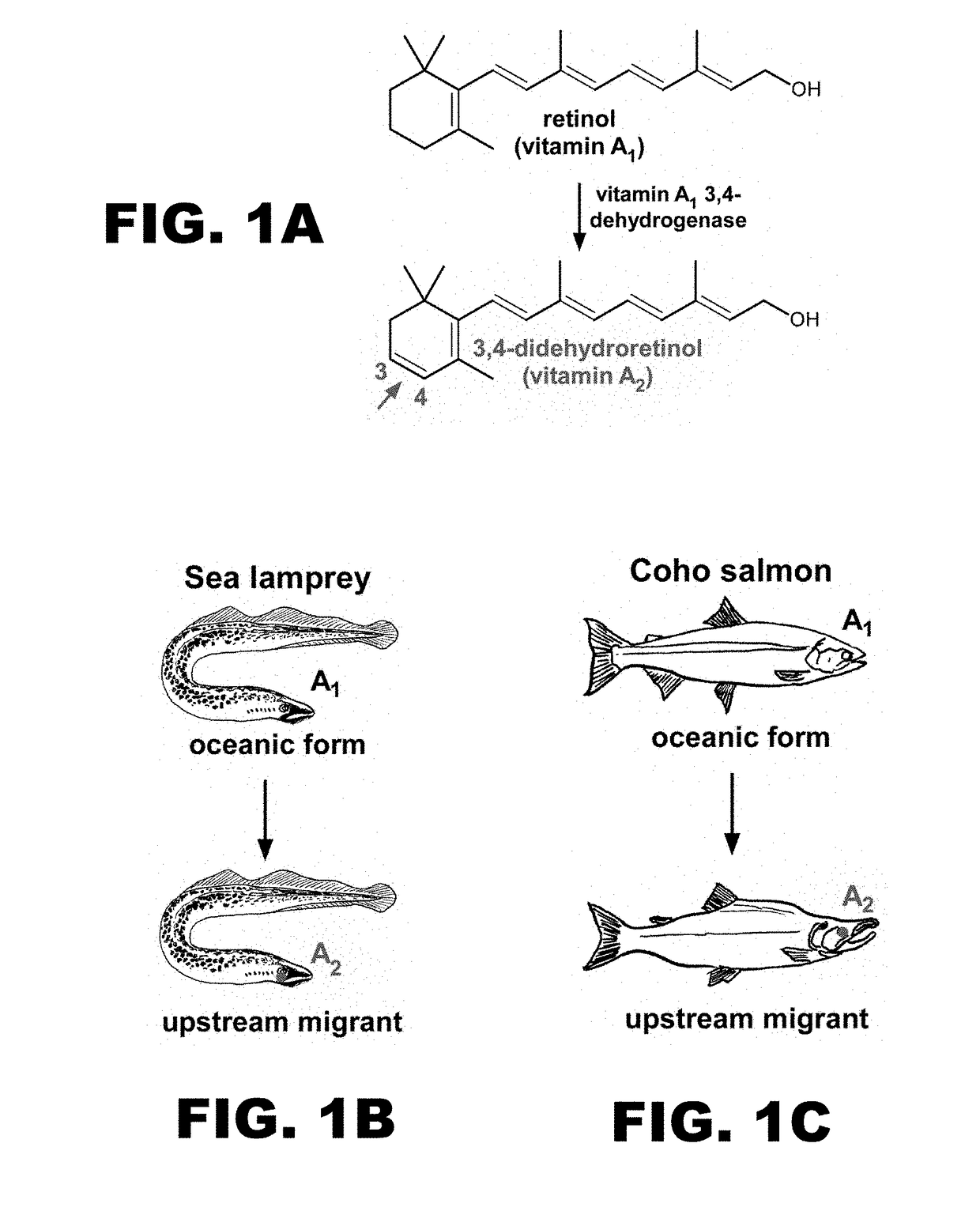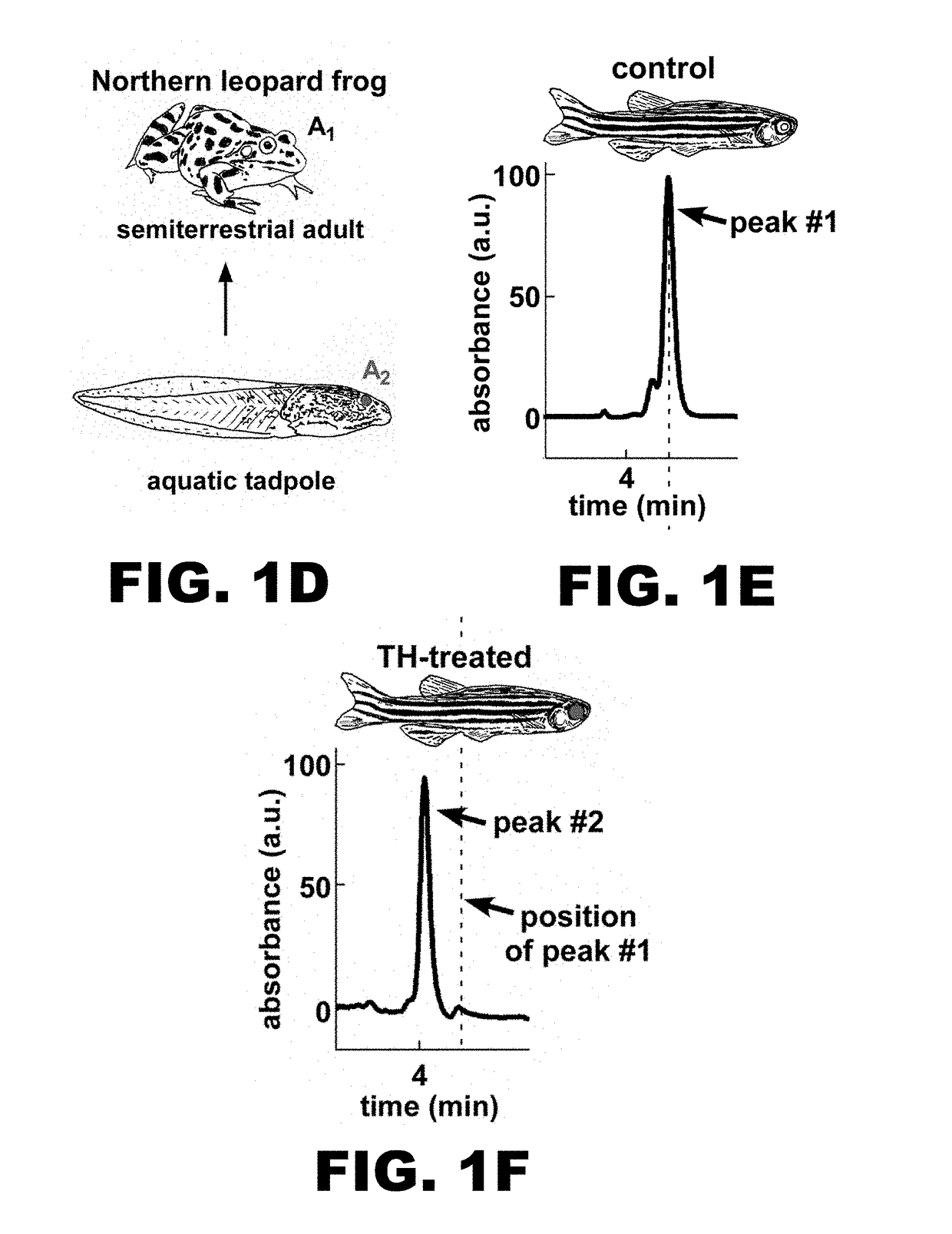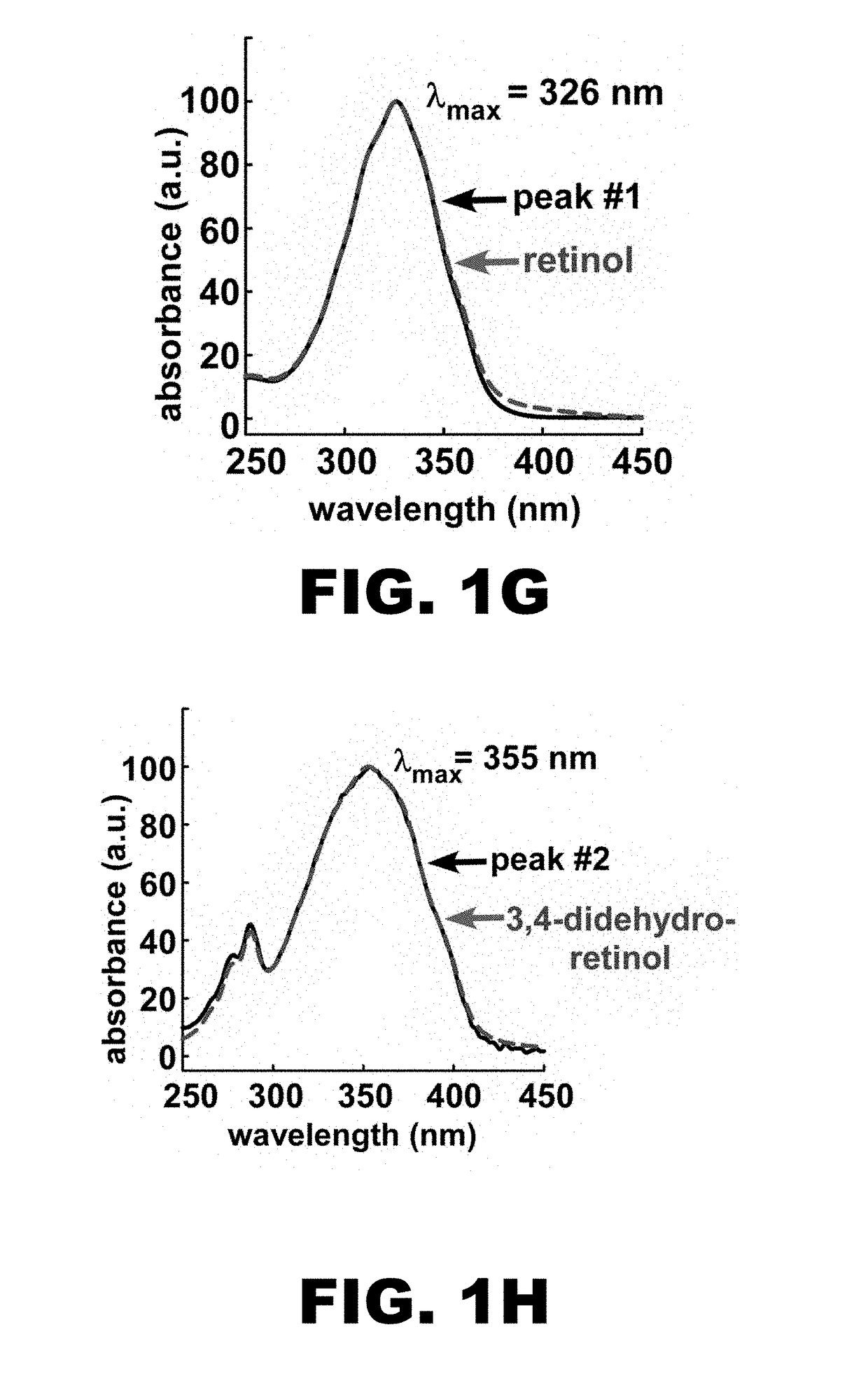Methods and compositions for red-shifted chromophore substitution for optogenetic applications
- Summary
- Abstract
- Description
- Claims
- Application Information
AI Technical Summary
Benefits of technology
Problems solved by technology
Method used
Image
Examples
examples
[0133]The following examples are included to demonstrate preferred embodiments of the invention. It should be appreciated by those of skill in the art that the techniques disclosed in the examples that follow represent techniques discovered by the inventors to function well in the practice of the invention, and thus can be considered to constitute preferred modes for its practice. However, those of skill in the art should, in light of the present disclosure, appreciate that many changes can be made in the specific embodiments which are disclosed and still obtain a like or similar result without departing from the spirit and scope of the invention.
examples 1-3
Introduction for Examples 1-3
[0134]Significant technological challenges in the field of optogenetics remain. One problem, is that light penetrates brain tissue rather poorly. All tissues scatter light, with the extent of scattering decreasing with increasing wavelength3. An additional barrier to light penetration into brain is the presence of hemoglobin in blood which strongly absorbs light in the 500-600 nm range3. Since hemoglobin's absorption drops off rapidly beyond 600 nm, designing optogenetic tools that can operate in the far red or infrared region is a highly desirable goal1. In addition, if optogenetic tools are ever to be used therapeutically, the size of the human brain will necessitate the development of devices that can be controlled at a considerable distance from the light source. Since the majority of optogenetic actuators operate in the 450-600 nm range1,2, scattering and absorption remain significant barriers to realizing the full potential of optogenetics.
[0135]A ...
example 1
Identification of the Enzyme Mediating the Conversion of Retinal Into 3,4-dehydroretinal—Cyp27c1
[0139]Optogenetic actuators utilize all-trans retinal (henceforth ‘retinal’) as their chromophore2. The fortuitous presence of retinal in mammalian neurons enables the use of these actuators in vivo. In a recent study, Spudich and colleagues showed that replacement of retinal with 3,4-dehydroretinal in optogenetic actuators in vitro can red-shift their action spectra (FIG. 12)10. Unfortunately, the mammalian brain neither accumulates nor synthesizes 3,4-dehydroretinal, thus it is currently impossible to implement red-shifted chromophore substitution in vivo. The goal of this Example is to employ a biomimetic strategy to solve this problem. Migratory fish achieve a remarkable red-shift in their spectral sensitivity by inducing the expression of an enzyme that converts retinal into 3,4-dehydroretinal9. In this Example, we will utilize expression profiling in zebrafish to identify this enzym...
PUM
| Property | Measurement | Unit |
|---|---|---|
| Sensitivity | aaaaa | aaaaa |
| Wavelength | aaaaa | aaaaa |
Abstract
Description
Claims
Application Information
 Login to view more
Login to view more - R&D Engineer
- R&D Manager
- IP Professional
- Industry Leading Data Capabilities
- Powerful AI technology
- Patent DNA Extraction
Browse by: Latest US Patents, China's latest patents, Technical Efficacy Thesaurus, Application Domain, Technology Topic.
© 2024 PatSnap. All rights reserved.Legal|Privacy policy|Modern Slavery Act Transparency Statement|Sitemap



